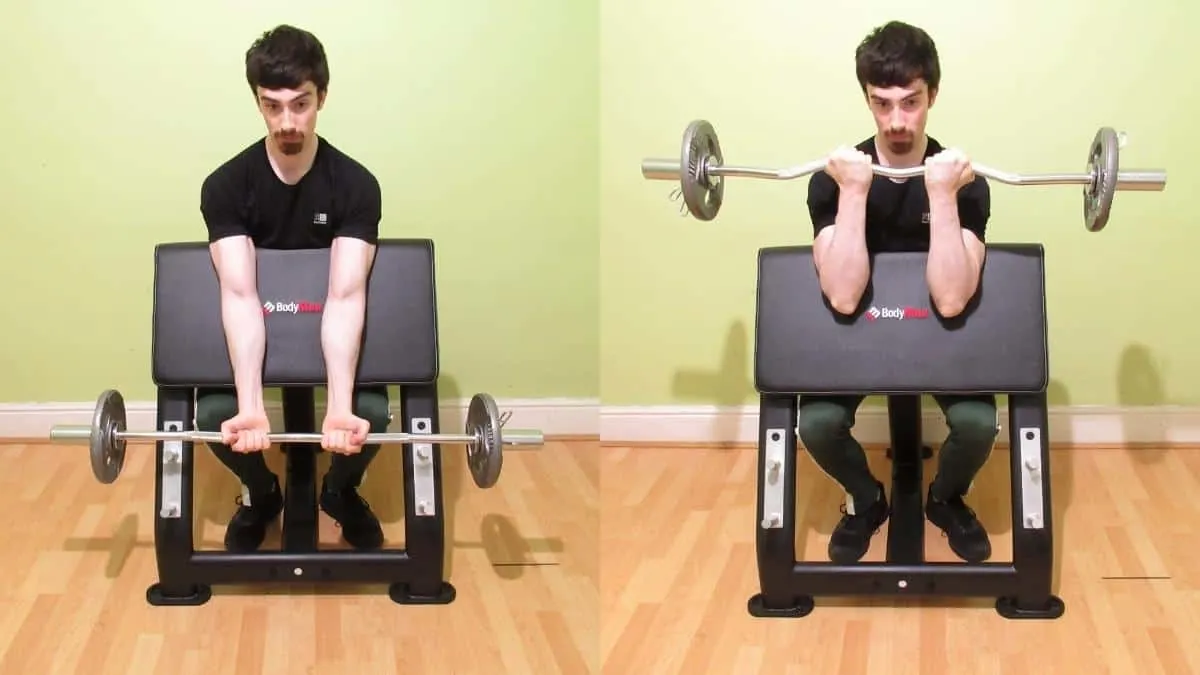The close grip preacher curl primarily works the long head of the biceps brachii because the narrow hand spacing shifts the tension onto the outer bicep muscle fibers. Since this is the area of the biceps that most lifters need to bring up, performing close grip preacher curls can help you to builder wider, more proportional upper arms.
The downside is that you can’t quite lift as much weight as you can on the regular preacher curl because by using a narrow grip, you’re not putting your biceps in their optimal force-producing position.
Besides learning how to do the close grip barbell preacher curl with the optimal form, you’ll discover the key differences between wide grip and narrow grip preacher curls.
Related: Leg and arm workouts
Close grip preacher curl exercise details
- Main Muscles: Biceps brachii
- Secondary Muscles: Brachioradialis, brachialis, forearm flexors
- Exercise Type: Strength
- Exercise Mechanics: Isolation
- Difficulty Level: Beginner
- Equipment Needed: Barbell, preacher pad, weight plates.
How to do close grip preacher curls
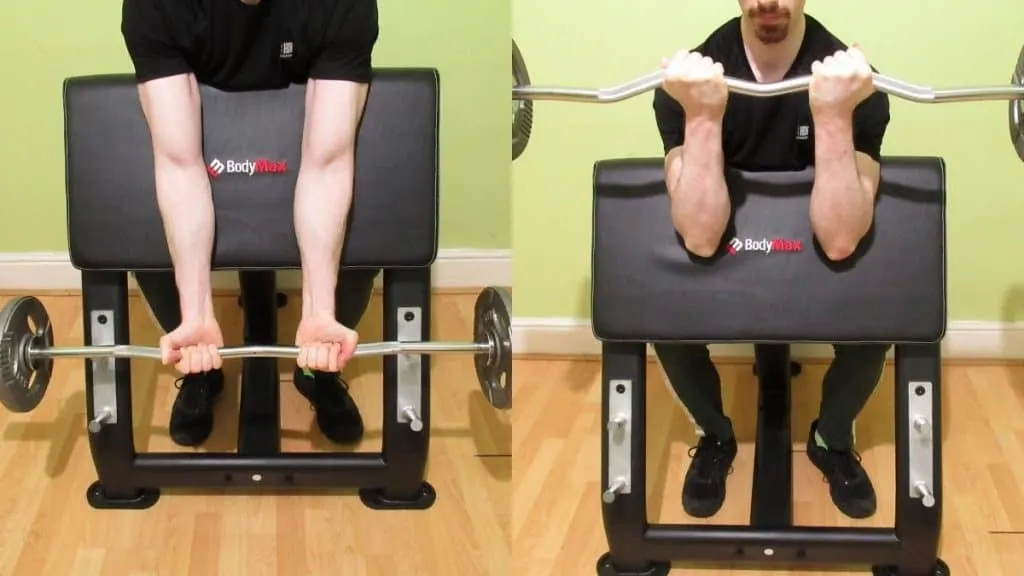
- Load some weight discs onto a bar. For greater convenience, grab a fixed barbell of an appropriate weight.
- Put the bar in the preacher rack.
- Grab the bar a few inches inside shoulder width.
- Curl the bar toward your shoulders until your forearms and biceps squeeze together.
- Lower the weight under control until your elbows are completely extended.
- Repeat the motion for 3-4 sets of 8-12 reps.
Close grip preacher curl mistakes
The close grip preacher curl is a relatively straightforward exercise that’s made all the more accessible by the assistance of the preacher pad, which heavily encourages the use of good form. However, many lifters still get tempted to trade technique for more weight, which predictably leads to lower bicep stimulation and less muscle growth.
Curling with your hands together
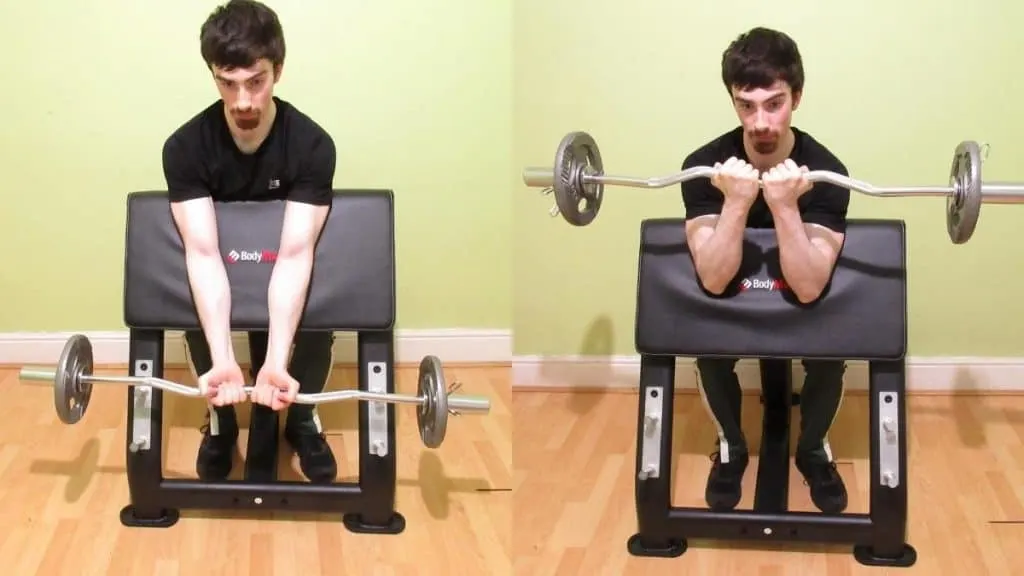
Holding the bar with a narrow grip doesn’t mean that you need to have your hands touching. Such a grip places excessive strain on your wrists and also makes you weaker because your biceps can’t contract as effectively when your hands are too close together.
Instead, hold the bar a few inches inside shoulder width. This way, you get the outer head emphasis that most lifters are looking for, but without the wrist discomfort and mediocre muscle contractions.
If you’re using an EZ bar rather than a barbell, then just use the narrowest grips that still don’t have your hands touching.
You can also stick to narrow grip EZ bar curls if you don’t have access to a preacher pad (or if it’s taken). The technique is virtually the same. But just be sure to pay extra attention to your form because it can be tempting to swing the weight up when you don’t have the preacher pad to stabilize your arms.
Not getting a full extension
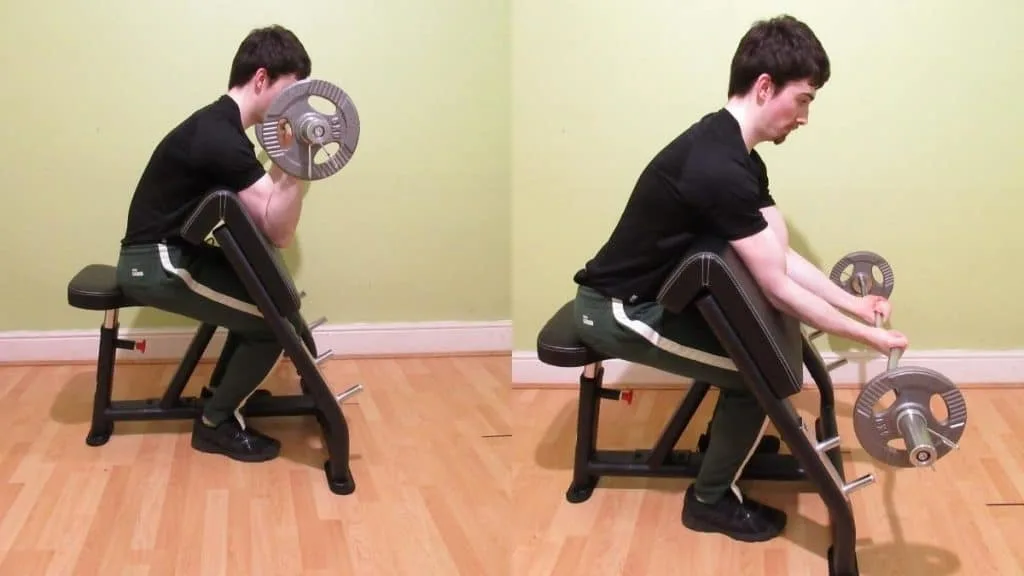
Close grip barbell preacher curls become more challenging the closer you get to full elbow extension, which is to say during the bottom half of the rep. [1] Knowing this biomechanical fact, it’s crucial that you lower the weight all the way down during the eccentric portion of the rep if you want to get the best results.
Flexing your triceps at the bottom of the movement makes getting a full range of motion easy because when the triceps are contracted, the biceps are by definition lengthened and thereby under the most tension from a preacher curl. [2]
Similarly, you should also strive to achieve a full contraction on each rep by curling the weight until your biceps and forearms make forceful contact. Squeezing your arms at the top of the range of motion also results in a stronger muscle pump, which can enhance the appearance of your biceps during training.
Lifting too much weight

While it’s possible to lift too much weight on any exercise, you might be doing it on close grip preacher curls without even realizing it.
Due to the narrow grip, your biceps can’t quite produce as much force as they can when your hands are at shoulder-width. As a result, you might notice that you have to decrease your reps in order to lift the same weight. Decreasing the reps is fine, but just make sure that you’re performing sets of 8+ reps most of the time so that you’re getting enough time under tension.
You may also wish to perform the close grip preacher curl as a finishing exercise after the traditional standing preacher curl, in which case you’ll definitely be lifting lighter weights.
Close grip vs wide grip preacher curls
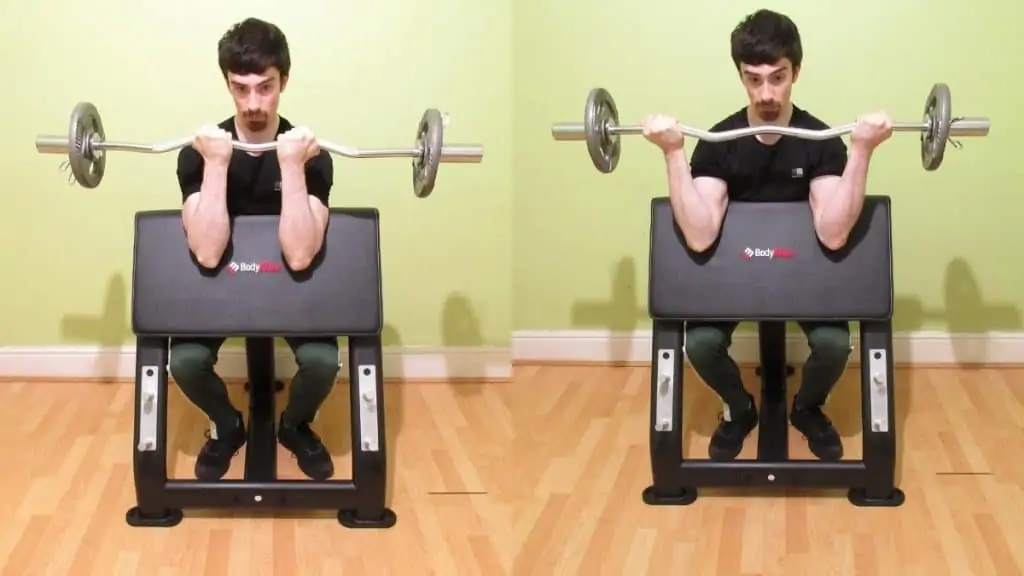
The wide grip preacher curl emphasizes the short (inner) head of the biceps, whereas the close grip preacher curl prioritizes the long (outer) head.
Most lifters tend to have slightly better inner head development and will thus be stronger on the wide grip variation.
For optimal bicep development, you can include both versions in your arm routine. Note, however, that you don’t necessarily have to perform them both in the same workout. You may actually find that you’re stronger when you split the exercises up across different workouts because your biceps will be less fatigued.
Just remember that you can’t completely isolate parts of the biceps. Rather, you can only emphasize certain regions of a muscle.
Also, don’t forget to do a reverse grip preacher curl or something similar in order to work your brachioradialis, which is a crucial forearm muscle for building thick arms.
The verdict on close grip preacher curls
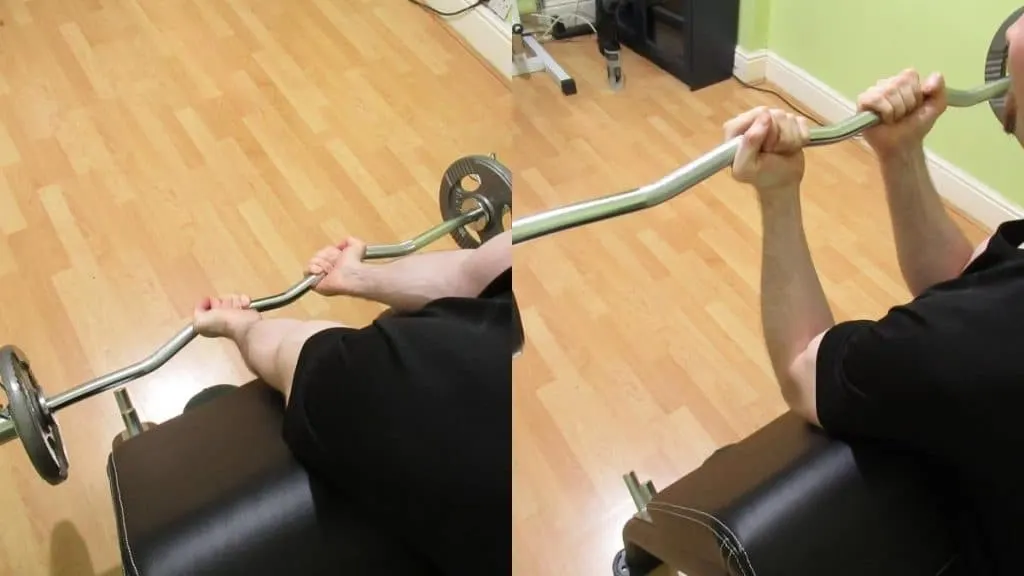
As you learned during our close grip vs wide grip preacher curls comparison, the narrow grip preacher curl is a great exercise because it emphasizes the bicep head that most people need to work on.
Similarly, doing close grip curls over the preacher pad makes it difficult to swing the weight up, which means that more of the tension stays on the target muscles.
For best results, stick to moderate reps on the close grip preacher curl. Although there’s nothing wrong with lifting heavy (3-7 reps), the range of motion for a preacher curl is very small, so you almost need to use higher reps (8-15) in order to get enough time under tension.
References
- Nunes, J. P., Jacinto, J. L., Ribeiro, A. S., Mayhew, J. L., Nakamura, M., Capel, D. M. G., Santos, L. R., Santos, L., Cyrino, E. S., & Aguiar, A. F. (2020). Placing Greater Torque at Shorter or Longer Muscle Lengths? Effects of Cable vs. Barbell Preacher Curl Training on Muscular Strength and Hypertrophy in Young Adults. International Journal of Environmental Research and Public Health, 17(16), 5859. https://doi.org/10.3390/ijerph17165859
- Antagonistic muscle pairs – Muscular system – AQA – GCSE Physical Education Revision – AQA. (2021). BBC Bitesize. https://www.bbc.co.uk/bitesize/guides/z32wmnb/revision/3

